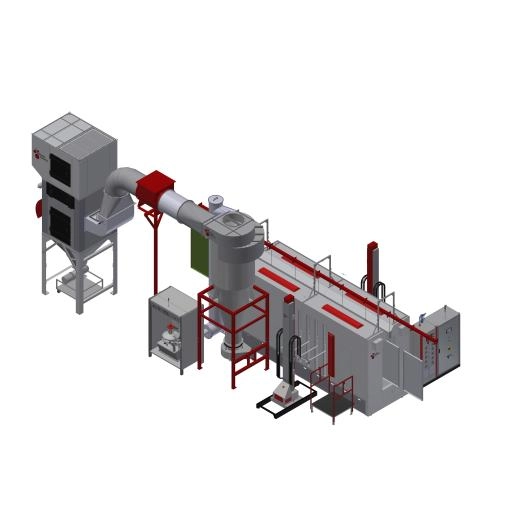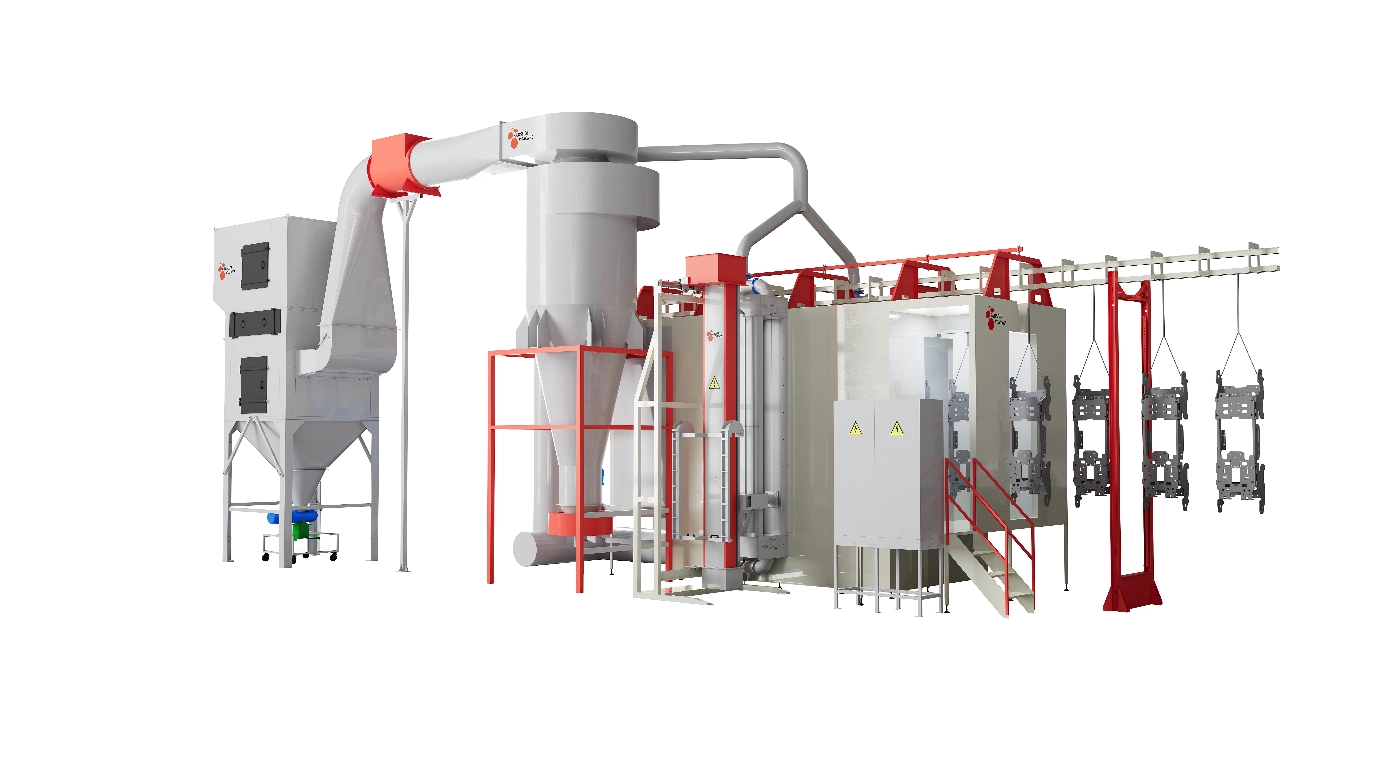Content Menu
● Understanding Reciprocators: Basic Concepts
>> What is a Reciprocator?
>> Common Components of Reciprocators
● Vertical Reciprocators
>> How Do Vertical Reciprocators Work?
>> Design Considerations for Vertical Reciprocators
>> Applications of Vertical Reciprocators
● Horizontal Reciprocators
>> How Do Horizontal Reciprocators Work?
>> Design Considerations for Horizontal Reciprocators
>> Applications of Horizontal Reciprocators
● Key Differences Between Vertical and Horizontal Reciprocators
>> Motion Orientation
>> Effect of Gravity
>> Space Requirements
>> Load Handling and Stress
>> Lubrication and Cooling
● Advantages and Limitations
>> Advantages of Vertical Reciprocators
>> Limitations of Vertical Reciprocators
>> Advantages of Horizontal Reciprocators
>> Limitations of Horizontal Reciprocators
● Selecting Between Vertical and Horizontal Reciprocators
>> Application Requirements
>> Load and Motion Dynamics
>> Installation and Maintenance
>> Cost and Complexity
● Case Studies and Real-World Examples
>> Vertical Reciprocator in a Hydraulic Press
>> Horizontal Reciprocator in an Automotive Engine
>> Vertical Reciprocator in a Water Well Pump
● Troubleshooting Common Issues
>> Issues in Vertical Reciprocators
>> Issues in Horizontal Reciprocators
● Maintenance and Best Practices
>> Maintenance for Vertical Reciprocators
>> Maintenance for Horizontal Reciprocators
● Summary and Conclusion
● Frequently Asked Questions (FAQs)
In various industrial and engineering applications, reciprocating mechanisms play a crucial role in converting rotary motion into linear motion or vice versa. Understanding the differences between vertical and horizontal reciprocators is essential for selecting the appropriate machine or system to achieve desired functionality, efficiency, and space utilization. This article will explore what vertical and horizontal reciprocators are, their working principles, design considerations, benefits, limitations, and applications. By the end, readers will have a comprehensive understanding of these two types of reciprocators and how to distinguish between them for practical uses.

Understanding Reciprocators: Basic Concepts
Before diving into the differences, it is important to understand what reciprocators are and how they function. Reciprocating mechanisms typically involve a part moving back and forth linearly in a straight path. This motion can be either vertical (up and down) or horizontal (side to side), depending on the system design and application.
What is a Reciprocator?
A reciprocator is a mechanical device or assembly that produces linear reciprocating motion. It is commonly used in engines, pumps, presses, and other machinery where converting energy into repetitive linear movements is required.
Common Components of Reciprocators
Most reciprocators, whether vertical or horizontal, consist of key components such as:
- Piston or Plunger: The moving part that travels in a straight line.
- Cylinder or Guide: A chamber or track that directs the piston's movement.
- Crankshaft or Linkage: Converts rotary motion into linear reciprocation or vice versa.
- Power Source: Such as an electric motor, hydraulic system, or internal combustion engine.
Vertical Reciprocators
Vertical reciprocators move in an up-and-down direction along the vertical axis. This configuration is common in certain applications where gravity influences the operation or where space constraints better suit vertical motion.
How Do Vertical Reciprocators Work?
In vertical reciprocators, the piston or plunger moves upwards and downwards inside a vertically oriented cylinder or guide. The driving force typically comes from a crankshaft or cam that translates rotary motion into linear motion. The motion can be powered by hydraulic, pneumatic, or mechanical means.
The vertical orientation allows the reciprocating component to work against or with gravity, depending on the system design.
Design Considerations for Vertical Reciprocators
- Gravity Effects: Gravity assists or resists the motion, impacting the force requirements and wear.
- Lubrication and Cooling: Vertical orientation can affect lubrication flow and heat dissipation.
- Space Utilization: Vertical motion often requires height clearance but saves horizontal floor space.
- Load Bearing: The system design must accommodate weight loads during vertical motion.
Applications of Vertical Reciprocators
Vertical reciprocators are frequently used in equipment such as:
- Hydraulic Presses: Where the vertical force applies pressure on materials.
- Vertical Pumps: Especially plunger pumps that move fluid vertically.
- Shaker Screens: For separating particles in mining or recycling.
- Compressors: Vertical reciprocating compressors in refrigeration or gas processing.
Horizontal Reciprocators
Horizontal reciprocators, by contrast, involve motion along the horizontal axis, moving side to side. This setup is often preferred where vertical space is constrained, or the operational dynamics favor horizontal movement.
How Do Horizontal Reciprocators Work?
In a horizontal reciprocator, the piston or reciprocating element travels in a straight horizontal path guided by a cylinder or track. The driving mechanism translates rotary movement into this side-to-side action, often via crankshafts or cam systems.
The absence of gravity directly opposing or aiding the motion changes the power and design requirements compared to vertical configurations.
Design Considerations for Horizontal Reciprocators
- Gravity Neutral: Movement occurs perpendicular to gravitational force, simplifying some design aspects but requiring careful alignment.
- Lubrication: Easier distribution and retention of lubricants along horizontal paths.
- Space Requirements: These systems often need substantial horizontal floor space.
- Load Handling: Generally less load from the weight of the reciprocating mass, affecting materials and structural choices.
Applications of Horizontal Reciprocators
Common uses include:
- Horizontal Pumps: Such as reciprocating diaphragm or piston pumps.
- Shuttle Presses: For stamping or forming parts in manufacturing.
- Engines: Many internal combustion engines use horizontal reciprocating pistons.
- Material Handling Systems: Horizontal shuttles in automation technology.
Key Differences Between Vertical and Horizontal Reciprocators
Understanding the distinctions helps in selecting the appropriate reciprocator for specific applications and operating conditions.
Motion Orientation
- Vertical Reciprocators: Move up and down along the vertical axis.
- Horizontal Reciprocators: Move side to side along the horizontal axis.
Effect of Gravity
- Vertical: Gravity influences the motion, requiring additional force to lift or assisting when moving down.
- Horizontal: Gravity acts perpendicular to the motion, generally not affecting the reciprocating force directly.
Space Requirements
- Vertical: Requires more vertical space but conserves floor area.
- Horizontal: Uses more horizontal floor space but limited vertical clearance needed.
Load Handling and Stress
- Vertical: Must accommodate the weight of the reciprocating mass, increasing structural demands.
- Horizontal: Usually experiences less gravitational load on moving parts.
Lubrication and Cooling
- Vertical: Gravity can aid or hinder lubrication flow; cooling may need special considerations.
- Horizontal: Lubrication often more evenly distributed; cooling strategies differ accordingly.
Advantages and Limitations
Advantages of Vertical Reciprocators
- Space-saving in terms of floor area.
- Certain applications benefit from gravity assistance.
- Easier alignment with vertically oriented processing lines.
Limitations of Vertical Reciprocators
- Potentially higher wear due to gravity effects.
- More complex lubrication management.
- Height restrictions might limit use in some facilities.
Advantages of Horizontal Reciprocators
- Simpler lubrication and cooling.
- Often easier to maintain and service.
- Better suited to heavier loads without gravity interference.
Limitations of Horizontal Reciprocators
- Requires more horizontal floor space.
- Can be less suitable where height is limited or where vertical processing is involved.
Selecting Between Vertical and Horizontal Reciprocators
Several factors influence whether a vertical or horizontal reciprocator is more suitable:
Application Requirements
- If the process involves vertical stacking, gravity feeding, or height considerations, vertical reciprocators are preferred.
- If the process requires spreading workloads or is confined in height but abundant in floor space, horizontal types are better.
Load and Motion Dynamics
- Higher load demands and structural strength often favor horizontal arrangements to reduce gravity-induced strain.
- Light loads or gravity-assisted operations align better with vertical reciprocators.
Installation and Maintenance
- Vertical systems may be more challenging to access depending on height.
- Horizontal systems often allow easier maintenance and monitoring.
Cost and Complexity
- Vertical reciprocators might require more sophisticated structures to handle weight and alignment.
- Horizontal systems can be simpler but may involve higher foundation or floor space costs.
Case Studies and Real-World Examples
Vertical Reciprocator in a Hydraulic Press
A manufacturing plant uses a vertical hydraulic press with a piston that applies downward force on metal sheets. Gravity helps the return stroke, and the compact floor footprint optimizes space.
Horizontal Reciprocator in an Automotive Engine
Most automobile engines utilize horizontal reciprocating pistons within cylinders arranged in various configurations (e.g., inline, V-type). This layout optimizes weight distribution and engine packaging.
Vertical Reciprocator in a Water Well Pump
Vertical reciprocating pumps extend deep into wells to lift water upward. Gravity's effect on the plunger is crucial in pump design and efficiency considerations.
Troubleshooting Common Issues
Both types of reciprocators face challenges, but some are specific to the orientation.
Issues in Vertical Reciprocators
- Wear on Lower Bearings: Due to weight, bearings and guides may wear faster.
- Lubrication Starvation: Gravity can cause oil pooling or starvation in certain areas.
- Noise and Vibrations: Vertical impact loads may generate distinctive noise patterns.
Issues in Horizontal Reciprocators
- Alignment Problems: Side loads can cause misalignment if supports are weak.
- Foundation Movement: Floor vibrations can affect operation more significantly.
- Lubrication Leakage: Horizontal seals may be more prone to leakage under pressure cycles.
Maintenance and Best Practices
Maintenance for Vertical Reciprocators
- Regular lubrication checks focusing on lower bearing areas.
- Inspection for signs of wear due to gravitational forces.
- Tightening and alignment checks to prevent skewing.
Maintenance for Horizontal Reciprocators
- Frequent alignment verification to avoid lateral wear.
- Seal inspections to prevent oil leaks.
- Foundation integrity assessments to minimize vibrations.
Summary and Conclusion
Vertical and horizontal reciprocators are fundamental mechanical systems that produce linear motion in different orientations. Understanding their design, operational principles, advantages, limitations, and the impact of gravity helps engineers and technicians choose the most appropriate mechanism for their specific applications.
Vertical reciprocators excel in applications with height advantage and gravity-related dynamics but require careful design to manage wear and space constraints. Horizontal reciprocators offer easier lubrication and maintenance with less gravitational load but need ample horizontal space and careful alignment.
By knowing the key differences in motion orientation, load management, lubrication, and application scenarios, professionals can optimize their facilities and machinery for improved efficiency and longevity.

Frequently Asked Questions (FAQs)
Q1: Can a reciprocator switch between vertical and horizontal orientations?
A1: While some reciprocators can be designed for either orientation, switching requires significant redesign to address gravity effects, lubrication, and load distribution differences.
Q2: Which orientation is more energy-efficient?
A2: Energy efficiency depends on the application. Vertical reciprocators may benefit from gravity during the return stroke, potentially saving energy. Horizontal types avoid gravitational resistance on the load but may require other energy inputs.
Q3: Are vertical reciprocators more prone to wear?
A3: Yes, due to gravity, the wear on bearings and guides in vertical reciprocators is often more pronounced compared to horizontal systems.
Q4: Which type is easier to maintain?
A4: Horizontal reciprocators generally allow easier access and simpler lubrication, thus are easier to maintain in most cases.
Q5: How does space availability influence the choice?
A5: Vertical reciprocators are chosen to save floor space but require vertical clearance. Horizontal reciprocators need more floor space but less height.
Hot Tags: China, Global, OEM, private label, manufacturers, factory, suppliers, manufacturing company










































 .
. 